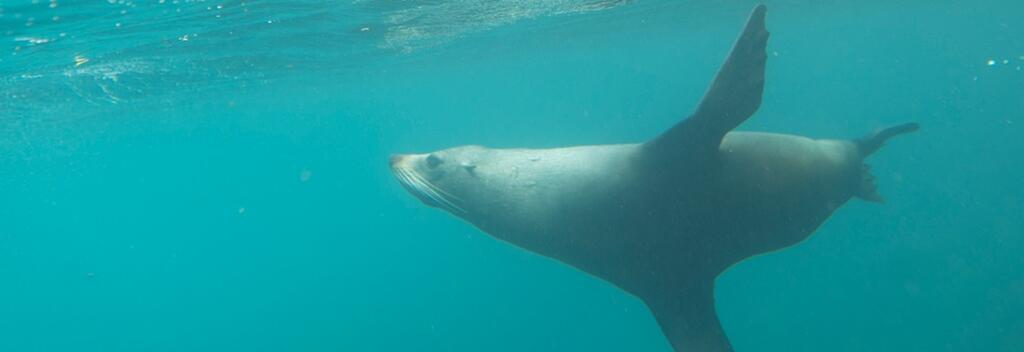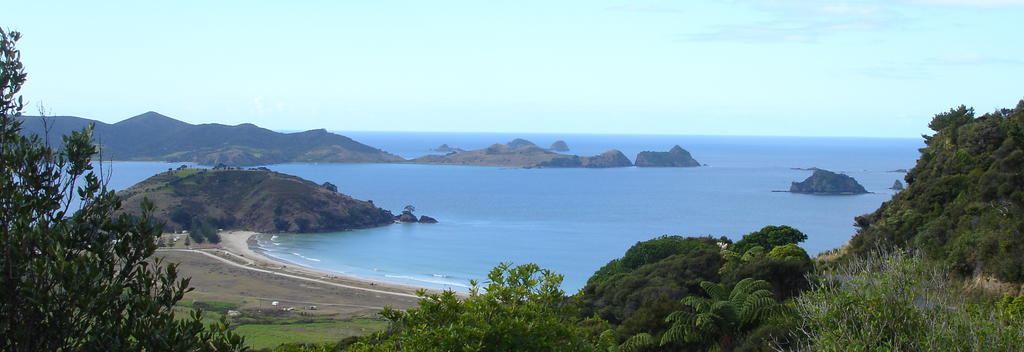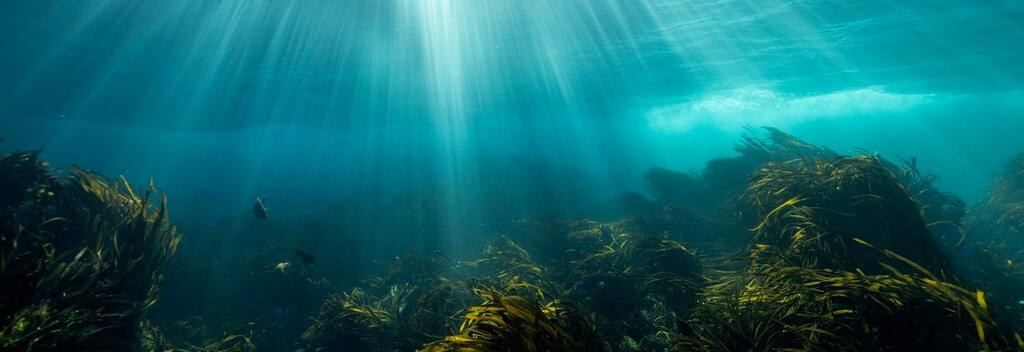-
Popular places to visit
Popular things to do
Helpful tips
Here's a few useful links to help with planning your trip to Aotearoa New Zealand.
-
Discover Aotearoa New Zealand's incredible underwater landscapes with these top diving and snorkelling spots.
New Zealand is a mecca for divers and snorkellers of all levels, with its unique geological features, an easily accessible coastline, hundreds of offshore islands, and a rich variety of marine species. If you’re not yet a diver, there’s a multitude of spots around the country to learn through a PADI Learn To Dive Course(opens in new window).
You’ll be amazed at the underwater wonders to discover in Aotearoa – including manta rays, dolphins, whales, penguins and turtles; wrecks, kelp forests, sub-tropical reefs, and caves and archways. Some even claim to have spotted mermaids swimming around the clear-blue waters...
With such a rich ocean landscape, it’s hard to find a dive spot that isn’t incredible - here are some of the best.
The Poor Knights Island Marine Reserve is arguably the best of the best when it comes to diving in New Zealand – it is also considered one of the top five dive spots in the world!
These unique islands are remnants of ancient volcanoes that erupted in the Pacific Ring of Fire. Explore crystal-blue waters with a myriad of spectacular drop-offs, caves, arches and tunnels, all inhabited by an amazing array of underwater life. The warm waters are paradise for orcas, dolphins, bull rays, and friendly shoals of fish that can often be seen creating mesmerising displays beneath the waves.
The islands are home to the Rikoriko Cave, one of the largest sea caves in the world. Jump on a tour with Dive! Tutukaka(opens in new window) to explore this wonderful site, or live out your mermaid dreams by becoming a certified PADI Mermaid with Freedive Aotearoa(opens in new window) – one of the most unique new ways to explore the ocean.


Located within the small Aramoana settlement, the Aramoana Mole is a man-made rock wall that was constructed to protect the entrance of the harbour from gathering silt. Now, it’s an inviting dive site home to several wrecks that act as artificial reefs, which are lined with kelp forests and full of fish.
On a dive here you will be able to see carpet sharks, telescope fish, sevengill sharks, and the New Zealand hooker sea lion. Visibility reaches 3-6 metres on average, and on a good day, it can be up to 10m. If you look carefully, you may even spot some seahorses and nudibranchs playing around their coral homes. Above water, you might be lucky enough to see hoiho (Yellow Eyed Penguins) on the beach!
Goat Island was New Zealand’s first marine reserve, and a popular dive and snorkel destination for New Zealanders and visitors. The island is located a mere 100 metres from the beach, making it a great spot for supervised kids and beginner water explorers.
It is one of the best places to see snapper and other fish such as kingfish, red moki, leatherjackets and blue maomao. The island is also frequented by dolphins, orcas, and fur seals.
Bring your own snorkel or dive gear, or hire from one of the local operators. You can dive or snorkel straight off the beach with a buddy or join a guided tour. For those that don’t feel like getting in the water, you can jump on a glass bottom boat tour or hire a Clearyak (clear kayak).


The Cavalli Islands are a subtropical slice of paradise located just off the east coast of Northland. A dive at the Cavalli Islands is an unmissable opportunity to explore the treasures of New Zealand's Far North. The region is dubbed one of the most beautiful summer spots in New Zealand, but it’s equally beautiful in winter.
On the sea floor between the Cavalli Islands and Matauri Bay, you will find the wrecks of the famous Rainbow Warrior(opens in new window), a sunken Greenpeace vessel that now acts as an artificial reef for corals, anemones and various fish. On a dive here you will be able to spot some dolphins, orcas, fur seals, monster crayfish, and whiptail stingrays, amongst other aquatic species.


This beautiful island is located on the outer edge of the Hauraki Gulf in New Zealand’s only National Marine Park – with its subtropical climate and volcanic rock formations, there is plenty to explore underwater.
The chain of islands is full of dive sites suitable for all levels of experience. There are also a number of shipwrecks for curious divers to investigate, including the SS Wairarapa, which hit the reef at Great Barrier Island and sank in the late 19th Century.
Kaikōura(opens in new window) is a very special place - the unique coastline where the mountains meet the sea are truly a sight to behold, and its cold waters are full of remarkable amounts of biodiversity. On a dive here, you will be able to experience kelp forests, octopus, stingray, and a variety of native fish species.
If you are adventurous, join the Shore Diving experience at Daves’ Diving Kaikōura(opens in new window), which will have you climbing over rocks and exploring underwater, occasionally with seals. Swimming with New Zealand fur seals in the shallow bays of the beautiful Kaikōura Peninsula really is an experience that you don't want to miss. You can even snorkel around the rugged waters and get a closer look at kelp forests and shoals or fish as they pass by. Keep your eyes peeled for the orcas, dolphins and whales that often frequent these parts!
The Coromandel Peninsula is a major attraction for divers and snorkellers, with an abundance of spots.
Just off the fine golden sands of the famous Cathedral Cove lies the Te-Whanganui-a Hei Marine Reserve – and a dive trip with Cathedral Cove Dive & Snorkel(opens in new window) or Dive Zone Whitianga will allow you to explore stellar dive spots around the region.
Whitianga in Mercury Bay is one of the most popular dive spots in the region. Experienced divers can be seen venturing out to Never Fail Rock, which is covered in sponges and soft corals and is teeming with big shoals of trevally, kahawai, and blue and pink maomao.
Novice divers can head out to Bumper Point, where they will be greeted by an abundance of reef fish as well as moray eels.
If snorkelling is more your speed, you can hire some gear and head out to Gemstone Bay (Waimata), which has a snorkel trail marked by buoys that illustrate the marine habitats and associated species that live beneath.

Not only is Milford Sound a world-renowned natural wonder above water; once you dive below the surface, you’ll discover spectacular underwater seascapes – the cliff faces, Fiord walls and unique ecosystem of black coral trees, make it a bucket list dive spot! The coral trees have a stunning white appearance over a jet-black skeleton, and are usually only found in deep water trenches. Here, they can be seen in depth as little as eight metres.
On a dive in these cold waters, you may see dolphins, seals, sharks, penguins, eels, octopus, stingray, crayfish and colourful nudibranch – a mesmerising experience! Descend Dive in Te Anau will take you an a Fiordland dive trip that you will not be able to stop thinking about – you may even get to meet resident eel Boris, who has lived there for 10 years.


If you’re an adrenaline junkie and diving with sharks is on your list, this one’s for you. This tiny region, which is known for its oysters and as the gateway to Stewart Island, is also one of the best places in the world to go shark-cage diving. An experience with Shark Experience(opens in new window) will get you up-close and personal with these majestic creatures. There are plenty of sharks in the Foveaux Strait - you can expect to see Great Whites, Makos, and Blues.


Discover the unspoilt coastlines of Stewart Island/Rakiura with a guided snorkelling and freediving tour from Dive Rakiura(opens in new window). Led by experienced divers, you'll explore the island’s top dive spots, venturing into vast kelp forests teeming with marine life, such as sea lions, jellyfish, diverse fish species, and kina (sea urchins) as large as dinner plates.
Other highlights include Neck Peninsula, the final resting place of the S.S. Tarawera, and Māori Beach, where you'll find plenty of secluded snorkelling spots.